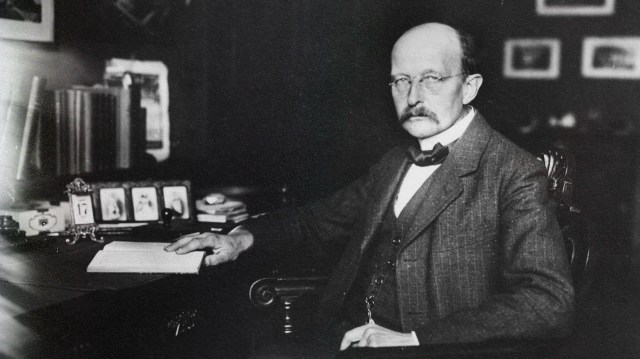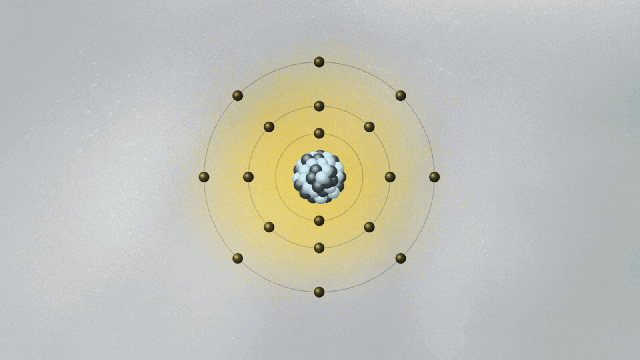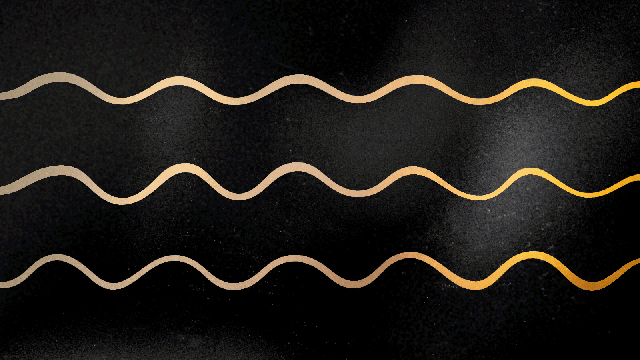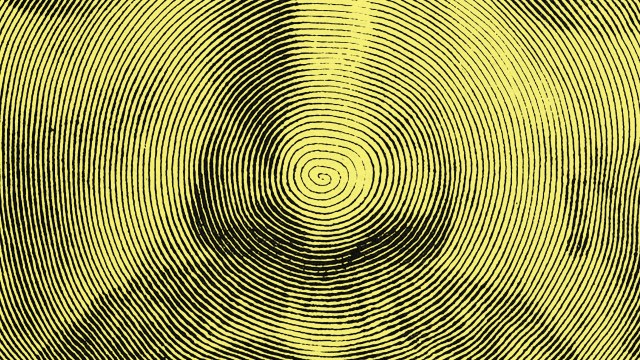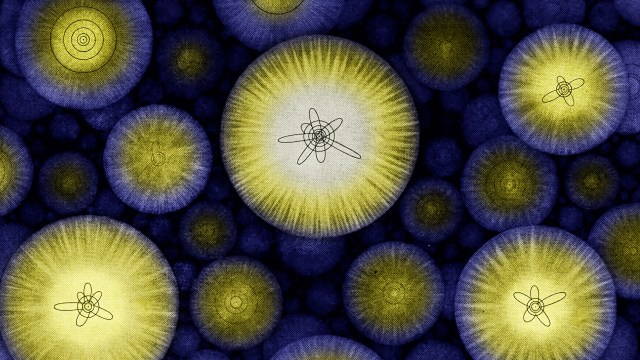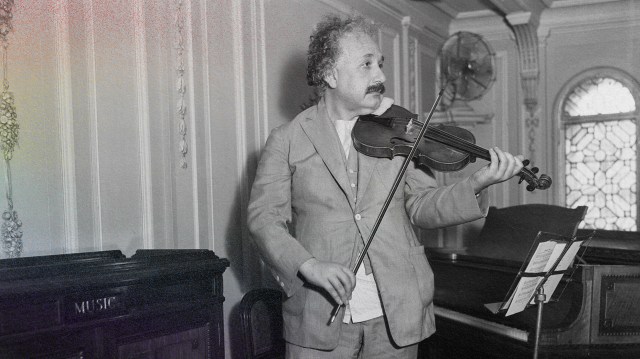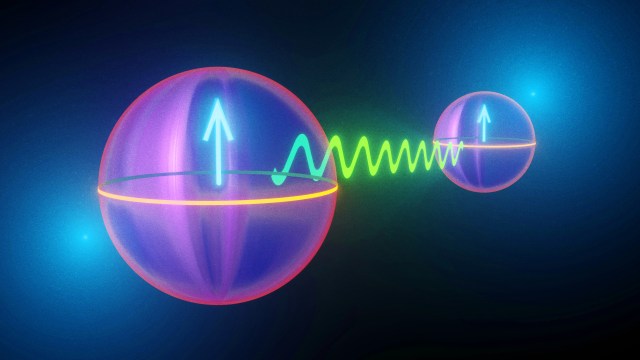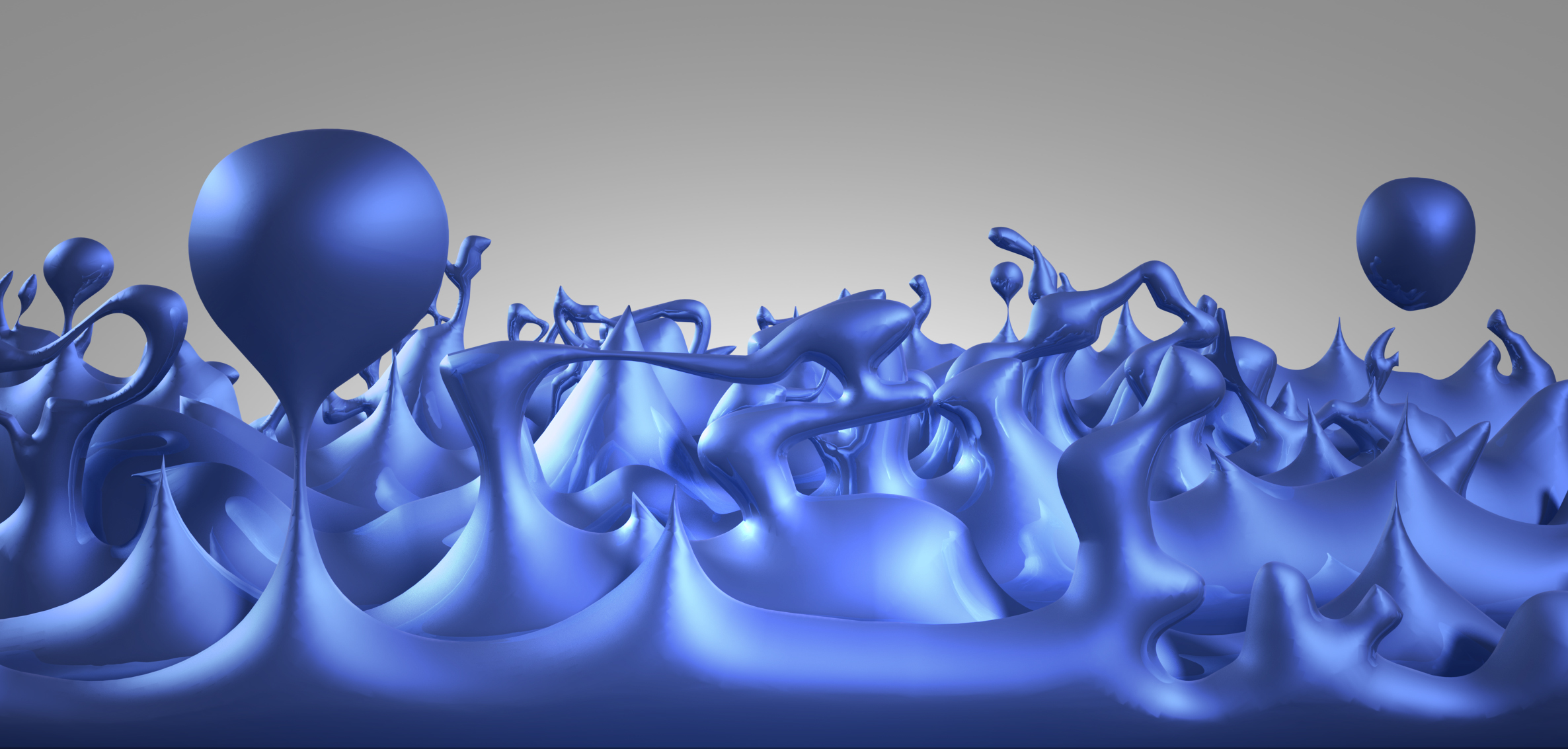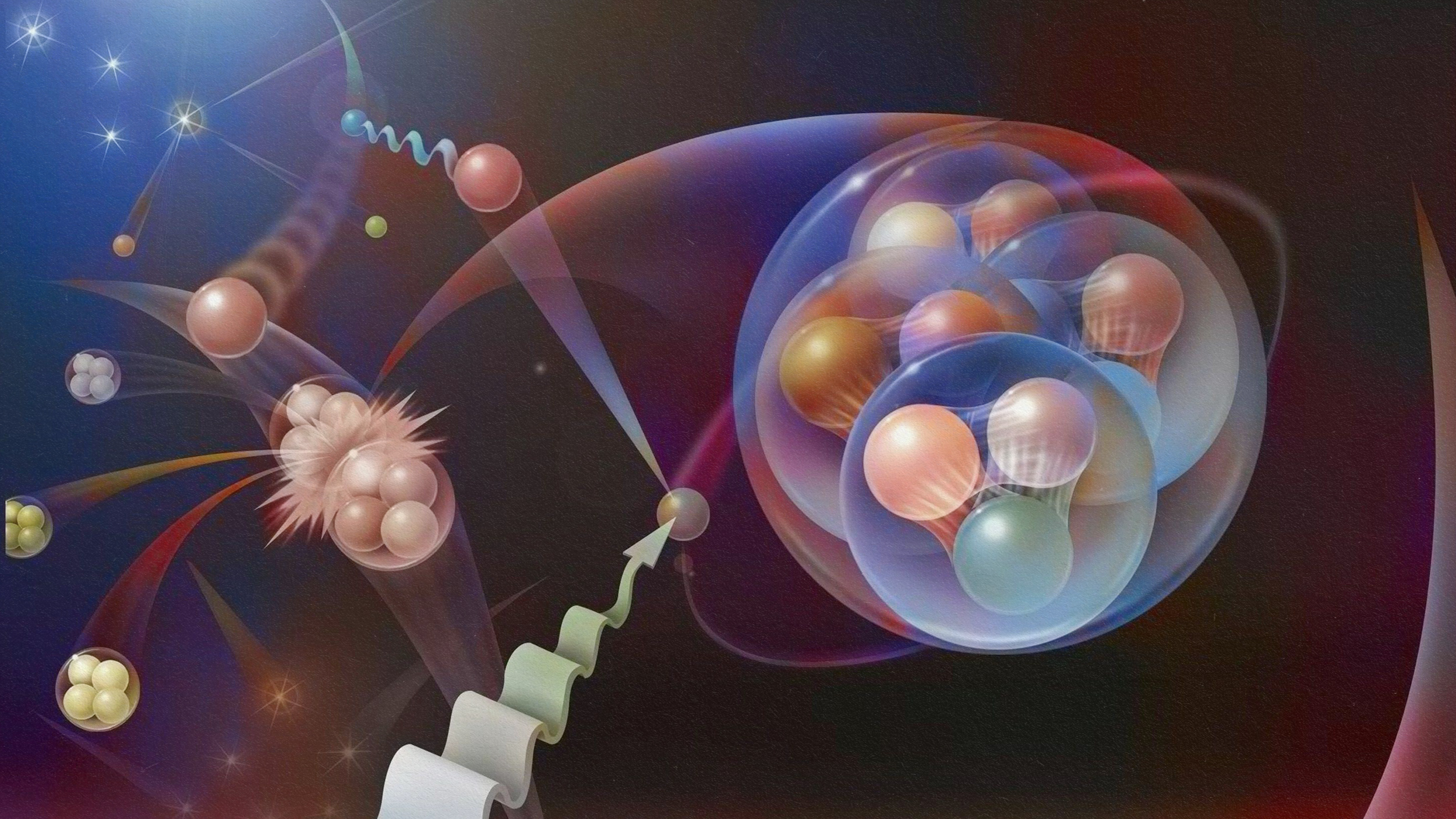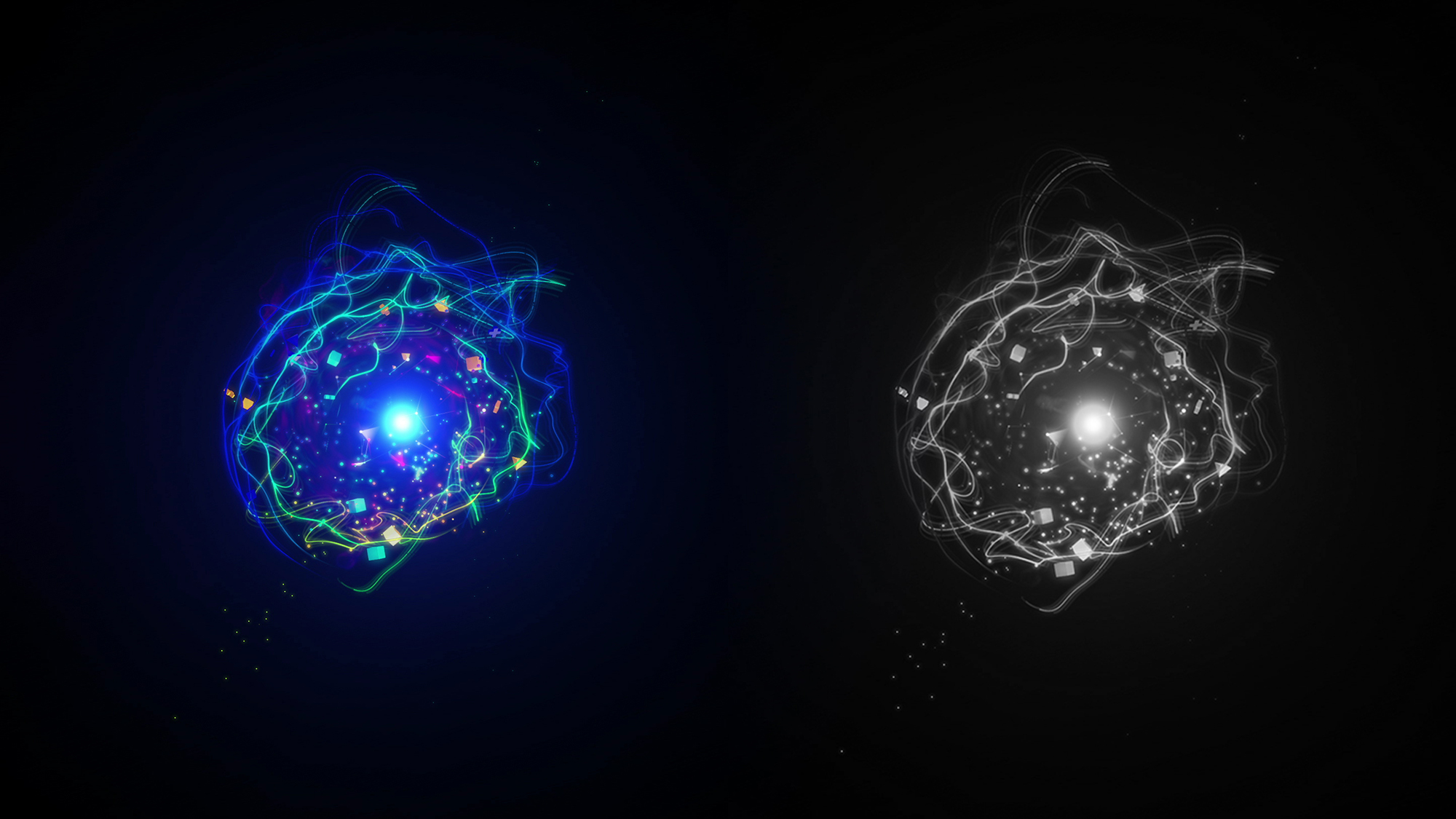Quantum mystery: Do things only exist once we interact with them?

- The more physicists understood the nature of quantum mechanics, the more bizarre it became.
- There was endless drama and fighting as people tried to digest what their theories were telling them.
- At the bottom of all this lies the perennial question: Can we truly figure out the nature of reality?
Perhaps the weirdest thing about the quantum world is that the notion of an object falls apart. Outside the world of molecules, atoms, and elementary particles, we have a very clear picture of an object as a thing we can behold. This applies to a door, a car, a planet, and a grain of sand. Moving to smaller things, the concept still holds for a cell, a virus, and a large biomolecule like DNA. But it is here, at the level of molecules and of distances shorter than a billionth of a meter or so, that the problems begin. If we keep moving to smaller and smaller distances, and continue to ask what are the objects that exist, quantum physics kicks in. “Things” become fuzzy, their shapes unclear and their boundaries uncertain. Objects evaporate into clouds, as elusive in their contours as words are to describe them. We can still think of crystals as being made of atoms arranged in certain patterns — like our familiar kitchen salt, which is made of cubic lattices of sodium and chlorine atoms.
But dive into the atoms themselves, and simple pictures evaporate in a puff of puzzlement.
The quantum wiggle
The German physicist Werner Heisenberg attributed this fuzziness to an inherent property of matter he described with what he called the Uncertainty Principle. Put simply, the principle states that we cannot pinpoint the position of an object with arbitrary precision. The more we try to ascertain where it is, the more elusive it becomes, as the uncertainty in its velocity increases. This effect is negligible for larger objects like a human, a grain of sand, or even a large biomolecule. But it becomes crucial as we look at smaller things like an atom or an electron. We can say with certainty that “yup, my pen is here at this place on my table.” In reality, even this statement is an approximation, since everything wiggles. But the wiggling is so tiny for larger objects that we can neglect it. But it defines what it means to be an electron, a proton, or a photon.
This fuzziness was a terrible blow to many of the architects of quantum physics, including Erwin Schrödinger, Albert Einstein, Max Planck, and Louis de Broglie. These brilliant physicists were a kind of old guard of the quantum view. They tried hard to bring classical notions of determinism back into the picture. But electrons do jump from one orbit to another in atoms. They are not little balls moving about the atomic nucleus like the Moon about the Earth. They were clouds of probability. The new quantum mechanics predicted things, but it never determined them.
Schrödinger’s frustration exploded in an altercation when he visited Niels Bohr in Copenhagen:
Schrödinger: If we are still going to have to put up with these damn quantum jumps, I am sorry that I ever had anything to do with quantum theory.
Bohr: But the rest of us are very thankful for it, and your wave mechanics in its mathematical clarity and simplicity is a gigantic progress over the previous forms of quantum mechanics.
Schrödinger’s frustration led to a nervous breakdown. And although Mrs. Bohr showed some compassion toward Schrödinger while he laid ill in bed, Prof. Bohr showed no mercy whatsoever. He kept bombarding the weakened Erwin with arguments in support of the reality of quantum jumps.
Bohr and his followers won. The cozy, concrete notion of an object shifted. The notion of a fuzzy quantum object took hold, even though it clearly rests on a paradoxical expression. A quantum object is only a thing at all when observers or their machines ask it to be. Radical thinkers like Pascual Jordan would go on to claim that quantum things only exist when we interact with them.
The reason for the mystery
A cynic may discard all this as a waste of time. “Who cares? What matters is what we observe in the lab, not what something ‘is,’” they might say. “Physics is about data, not about metaphysical speculations.”
Our cynic has a point. If all you care about is data, then it does not really matter what goes on with an electron before some device detects it. The mathematics of quantum mechanics works incredibly well as a predictor of what this data should be. It will not give you certainty, but it will give you reliable probabilistic predictions.
The reason for the mystery is that the central equation of quantum mechanics, the Schrödinger equation, is different from the usual equations found in classical physics. When you want to compute the path a rock will follow when thrown, Newton’s equation will describe how the position of the rock changes in time from its initial position to its final resting point. You would expect that the equation for the motion of an electron would also describe how its position changes in time. But it does no such thing.
In fact, there is no electron in Schrödinger’s equation at all. There is instead the electron’s wave function. This is the quantum object that encapsulates fuzziness. By itself it does not even have a meaning. What does have meaning is its square value — its absolute value, as it is a complex function. This value issues the probabilities that the electron may be found in this or that position in space when it is detected. The wave function is a superposition of possibilities. All possible paths leading to different outcomes are there. But once a measurement is made, only one position prevails.
An essential fight in the world of physics
This is the essence of quantum superposition: that it contains all possible outcomes, each with a certain probability of being realized upon measurement. That is why people say that the electron is “nowhere” before it is measured. There is no equation to give it a precise location. Before it is measured, it is everywhere it can possibly be given the constraints of its situation — factors such as the forces interacting with it and the number of dimensions in which it moves. Quantum mechanics tells a story that has only a beginning and an end. Everything in the middle of the plot is blurry.
The question then is what to do with this. We could take our cynic’s position and embrace the pragmatic approach that all we care about is the outcome of measurements. Many physicists are happy with this. But if you believe that science should see deeper into the nature of reality, you will want to know more. You will want to make sure that there is no secret hiding behind quantum mechanical probabilities. You will want to probe deeper, hoping to find the hidden source of quantum fuzziness, the reason for this apparent loss of deterministic power in physics. That was what Einstein, Schrödinger, de Broglie, and later David Bohm wanted. The stakes were high, to figure out the true essence of reality. Meanwhile, Bohr, Heisenberg, Jordan, Pauli, and others were telling people to accept the weird nature of the quantum. A fight was about to begin between clashing worldviews. It is a fight still going on today, and that is where we will go next.

